Review for Samurai Jam: Bakumatsu Rock - Complete Season Collection
Introduction
Smart TVs suck, unless you have a brand new one of course. You see manufacturers and content providers will only support the last couple of years’ worth of models, anything older than that will just be forgotten. It’s because of that I’m not initially predisposed to enjoying Samurai Jam – Bakumatsu Rock. After years of living with Crunchyroll on my PC, I have to admit to a certain excitement when Viewster started streaming anime to the UK, as that is one service that my TV does carry. The first show on there that I chose to watch was Servant X Service, the second Samurai Jam. And that’s where it all fell down. One and a half episodes into Servant X Service, the player froze and refused to play any further. It was only 5 minutes into Samurai Jam that the Viewster app on the 2011 Panasonic TV quit.
If you’ve seen the opening few minutes of Bakumatsu Rock’s first episode, it isn’t even animated, just pans across static images set to pounding j-pop, the kind of thing that happens when a studio runs out of budget for an anime, not at the start. I submitted a support ticket to Viewster which they acknowledged, and then forgot (and one by one the apps on my TV slowly stop working as they lose support). I was left with a negative opinion of Bakumatsu Rock from those opening five minutes, and no desire to other means the show (Yeah, I could have watched it on my laptop, but if a streaming service is available on my TV, then I want to watch it on my TV dammit!), but now Bakumatsu Rock is finally here in the UK courtesy of Animatsu, on both DVD and Blu-ray, and I get to see if the show is actually animated at some point.
It’s the Tokugawa era, only with a difference. Who needs to crack down on the populace with force of swords, when you can sway their hearts with pop music? Of course only government mandated music can be performed, the so called Heaven’s songs, and the biggest pop idols in Kyoto are the Shinsengumi, who also double as moral police. Not that they need to do much policing, as everyone is a fan of the Shinsengumi, particularly their lead singers Hijikata and Souji.
Not quite everybody ,as ronin Ryoma Sakamoto has a dream of becoming a rock star. He works at a pizza restaurant trying to make that dream come true, but rock music is prohibited by the government, the guitar he carries is an illegal instrument, and the Shinsengumi are liable to stick their swords into any potential rivals. But he’s got the talent, and he’s found potential band members in Shinsaku and Katsura, and he’s got the drive to succeed. And he has a Peace Soul in his heart that causes the government serious concern.
The twelve episodes of Samurai Jam - Bakumatsu Rock are presented across 2 DVDs from Animatsu, and the show is also available on Blu-ray if you require.
Disc 1
1. Peace Soul! Let’s Rock Away!
2. Top Idols! Let’s Cut Loose at the Concert!
3. Passion! We’re Getting Part-Time Jobs!
4. Live Concert in the Bath! Naked Passion!
5. Peaceful! Heaven’s Song Spells Trouble!
6. Royal Concert! The Rocker’s Hearts are Brought to Tears!
Disc 2
7. Rockers! Let’s Form a Band!
8. Dark Cherries! Rock Must Die!
9. Mask the Rockers! Our Souls are Important!
10. Solo Debut! I Can’t Perform with You Anymore!
11. Heaven’s Song! Time for the Climax!
12. Ultra Soul! It’s the Dawn of Rock!
Picture
These are the US Sentai discs merely recoded for Region 2, with the Animatsu logo at the front end. The image therefore is in 1.78:1 anamorphic NTSC format. The image is clear and sharp enough, with no apparent issues with compression or aliasing. But the colours are seriously over-saturated to the point of retinal damage, although I guess it’s a creative choice. When even the pizza restaurant is an exercise in colour clash then this show will challenge the boundaries of artistic sense.
In the end, Bakumatsu Rock is more animated that the static pan opening sequence, but not by much. It becomes clear that the majority of the show’s budget probably went on securing the licences and rights to the pop and rock songs used within, and not a lot of money was left to actually animate the thing. It’s really poor at the best of times (people climbing ladders in episode 6 are wholly static in the middle of the screen, their arms move up and down, and the ladder scrolls downwards). This is anime of the old school, not a lot of actual animation, but visual effects applied in post to give the impression of motion. The actual song sequences get the CGI treatment (as in Love Live and Super Sonico) with the characters turning to CGI to get their instrumental performances at least looking more impressive, but you only really see this in the middle distance, and then only for twenty or thirty frames at a time. Bakumatsu Rock is a cheap and unimpressive animation, but it manages to tell its story. Not that this is an animation that warrants it, but the transfer is progressive if you have compatible equipment and you want to see it at 24fps.
Sound
The sole audio track on this release is a DD 2.0 Japanese stereo track, and you do get optional translated subtitles to go with it. They’re accurately timed, and free of typographical errors. The dialogue is clear, the voice actors suit their characters well, and the all important music comes across strongly.
Extras
You get two discs in an Amaray case with one held on a central hinged panel, the inner sleeve has some character art on one side, and the episode listing on the other, although the episode titles on the sleeve don’t match those on the menus. The disc menus are static by the way, and you also get jacket pictures on the discs. Animatsu have used the same cover art that Sentai used in the US. Each episode is followed by a silent translated credit reel.
All of the extras are on disc 1, and amount to the textless credits, and trailers for Nobunaga the Fool, Kamigami no Asobi, Uta no Prince Sama, and The Comic Artist & His Assistants.
Conclusion
Oh dear! It’s no K-On, that much is for certain. It’s no Love Live or Super Sonico, and it doesn’t even match Gravitation although it’s closest to the latter show in tone. The ideal for any show is to have great animation and a great story to tell. You can get away with having good animation disguising the limitations of a clichéd, poorly told story, while a great story can make you forgive low budget animation. But Samurai Jam is dismal animation, the worst I have seen in several years, coupled with an utterly hackneyed and tedious story. There’s very little to redeem this show, and the best I can say about it is that it plods along in predictable fashion, occasionally bursting into life to offer some genuine humour, the sheer energy of its characters doing just about enough to hold the attention, but offering absolutely nothing new, nothing to make it stand out, other than its hideous colour palette.
Samurai Jam is apparently aimed at the same target demographic as Free was, mainly females that appreciate the finer qualities of the toned male form, and long for a little bromance in their anime. But SamJam misses out on what made Free so different, so unique in its adaptation of the ‘cute girls doing cute things’ genre for male characters. Instead this show still clings to the usual shonen tropes of levelling up, and succeeding through superior willpower that make shows like Naruto and Bleach appeal to the young male demographic. Its art design and the character tendencies to get topless at the drop of a riff clash with its storytelling style and narrative direction, making it a schizophrenic watch that in my mind will appeal to neither audience instead of both.
It’s another period show, another anachronistic take on the Tokugawa period of Japanese history, here inserting rock groups and pop idols enforcing or fighting against state control with music, instead of militia and wandering ronin with swords. (Of course if you want a funny anachronistic take on the period, you ought to be watching Gintama!). The state controls the populace through idols (Shinsengumi again; see Gintama and Hakuoki), who sing poppy Heaven’s Songs which serve to entrance and pacify people, erasing their individuality. Into this Kyoto come three wandering musicians who have learnt their brand of rock from a shared master, and whose songs espouse freedom and individuality, at odds with the state mandated Heaven’s Songs. And a battle of the bands ensues over 12 episodes. Into this set-up is thrown ancient prophecies and curses, and the legend of the Ultra Soul, split into five pieces of the Peace Soul, which are revealed when music is played with genuine passion, serving to move people, and free them from their bonds.
I have my head in my hands at this point, which makes it hard to type. It is so dispiriting writing about a show with so little to redeem it. I could mention that the animation is so poor, so reliant on stock transformation sequences and repetitive GIF avatar style CGI, that it actually introduces continuity errors into the animation. A character loses his top when his Peace Soul activates in one cut, only for it to reappear in a CGI sequence, only to be missing again in the next 2D animated bit. I could mention the character that always has a straw in his mouth (cool guy character trait) even when he is singing. I could mention the bathhouse sequence, complete with todger comparison humour (elephant trumpet sound effect included). I could mention how the plot only gets explained in an exposition infodump in the last 10 minutes of the final episode. I could mention that episode that feels like a rip of the Kill la Kill episode where Mako Makanshoku briefly becomes affluent. But no... head in my hands again.
Despite the animation, there are moments in this show that appeal, the occasional episode that stands out. There’s one that I actually enjoyed where a girl idol group show up to assassinate our heroes, and fail miserably. And the premise could have worked if they got the music right. It’s just that the Heaven’s Songs and the Rock Songs sound too similar, well produced though they maybe. The lyrics are different, control versus freedom, but they sound the same, with only the level of guitar differentiating them. In style too, they wouldn’t be out of place in Gravitation, a show pushing on twenty years now. It could have been a commentary on manufactured pop versus genuine, independent and original music, a critique of the modern X Factor generation, but it fails even at that.
Those four shows that I mentioned in this review, Free, Gravitation, Gintama, and Hakuoki; SamJam wants to be all four, but it can’t match any one of them. I’d suggest any of those titles instead of this one. SamJam has its moments, but they are few and far between. If you can forgive the cheap animation, you might even enjoy watching the show, but you won’t remember any of it after the end credits have rolled, and neither will you be motivated to do so.
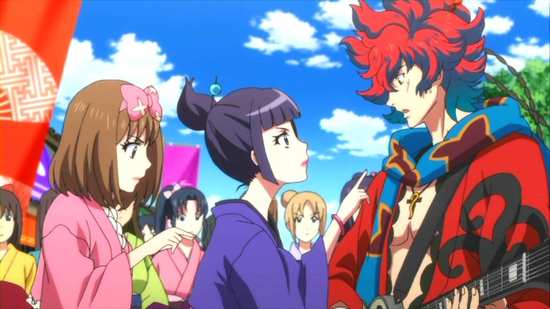
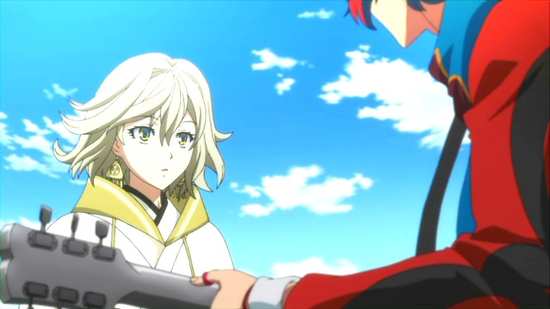
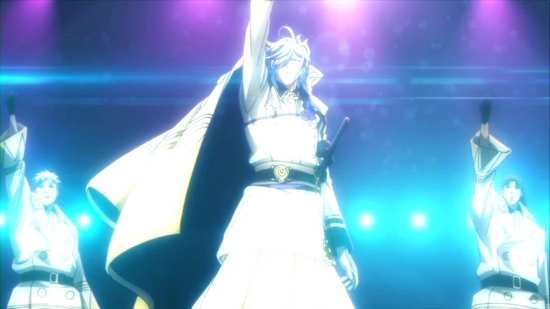
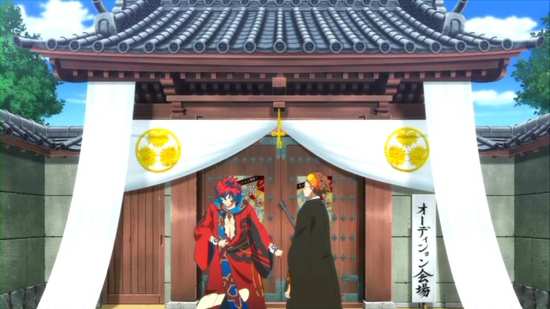
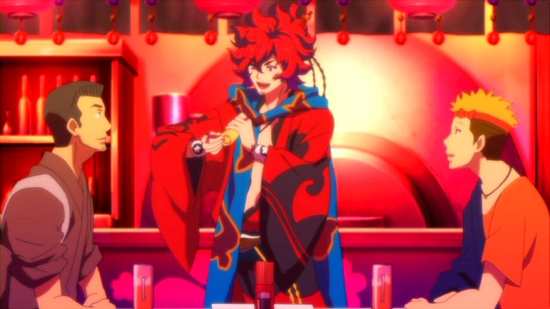
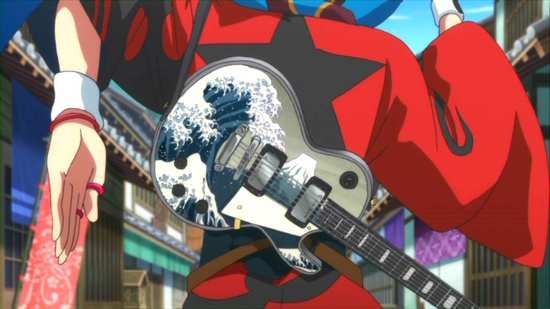

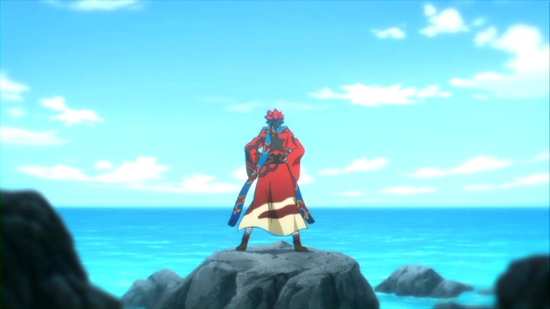
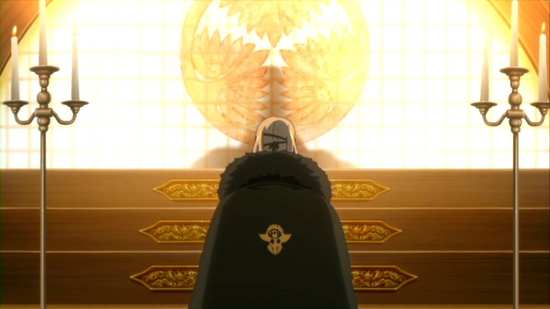
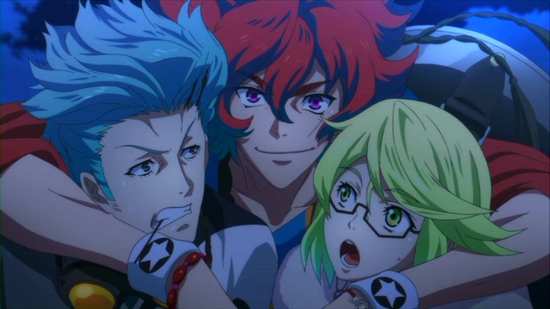
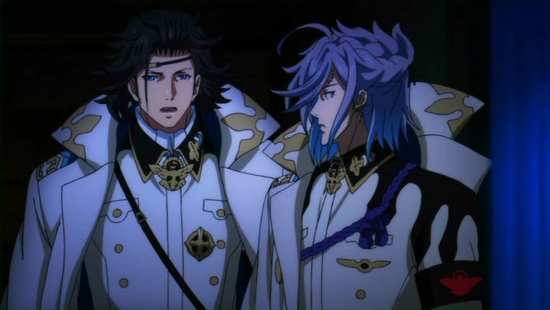
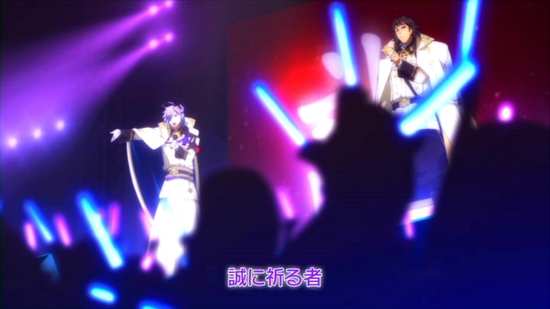
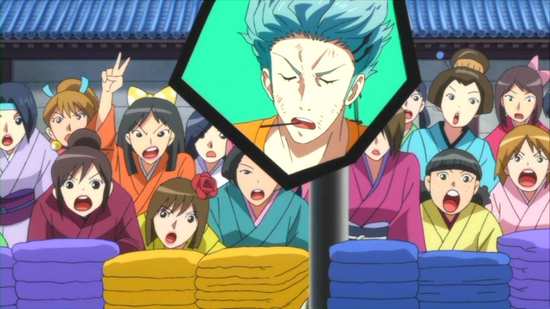
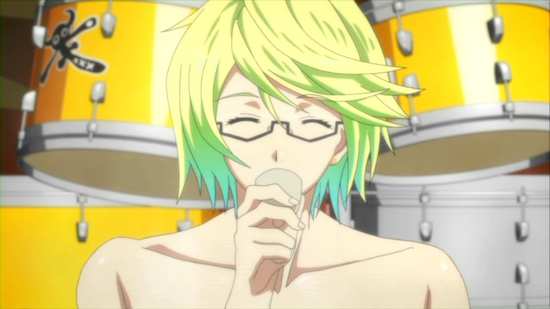
Your Opinions and Comments
Be the first to post a comment!